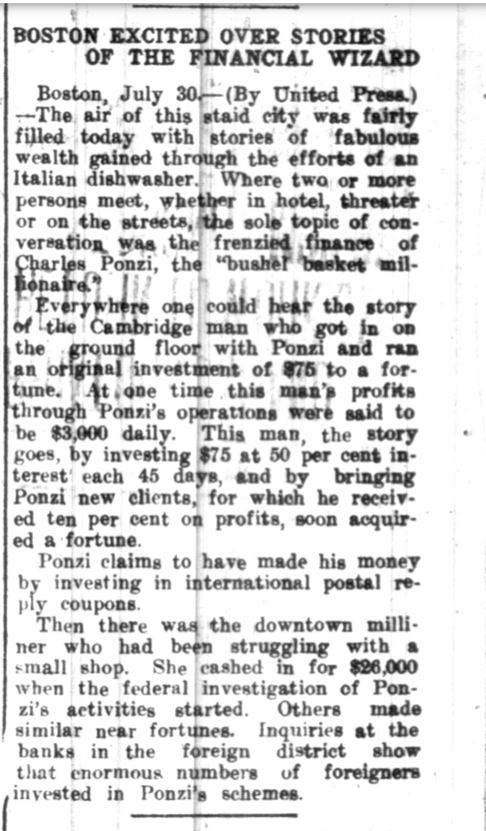



The “Ponzi Scheme” is named after Charles Ponzi, born Carlo Pietro Giovanni Guglielmo Tebaldo Ponzi, an Italian immigrant who arrived in Boston, Massachusetts in 1903 with $2.50 in his pocket. By July of 1920, he was supposedly making a million dollars a day scheming investors. The trick of a “Ponzi Scheme” is to lure investors in with a promise of quick and high returns with little investment risk. Returns are paid to ‘old’ investors with the money from ‘new’ investors. Charles Ponzi wasn’t the first to get caught defrauding people in this manner, but it was named after him because of the infamous press coverage he received during and after his fall from grace.
Ponzi’s get-rich-quick scheme was based on the loophole found in the purchase and redemption of the IRC or the International Reply Coupon. An IRC is a coupon that can be exchanged for postage stamps in another country. It allows a person to send someone in another country a letter or package, along with the cost of postage for a reply. The purchase price of the IRC was based on the postage rate of the country of purchase. When the IRC was redeemed, if there was a difference in the postage rates, there was a potential for profit. Ponzi sold the idea that he would purchase IRCs at cheaper European currencies, to be exchanged in the U.S. at higher postage rates, and then later sold. He claimed an exorbitant amount of a return and that brought in investors in droves.
The money he received from investors was not being used to buy IRC’s but rather kept for Charles himself or to pay returns to his investors. In January 1920, he opened up his business, the Securities Exchange Company, and within months he was making hundreds of thousands of dollars. By July 1920, he was supposedly pulling in almost a million dollars a day until his rapid success started to get questioned by financial journalists. Ultimately, the bad press from “The Boston Post” led to his downfall. By early August 1920, he had bank examiners reviewing his financial accounts and the positions he held with local banks.
It didn’t take long for Ponzi to see the writing on the wall. He turned himself in to the authorities and was charged with mail fraud. He ended up spending the remainder of his life in and out of the Massachusetts prisons.
The attached Gainesville Daily Register articles span from July 30, 1920 to August 12, 1920. There are even articles on Charles Ponzi in the 1926 papers.
This project is made possible by a grant from the U.S. Institute of Museum and Library Services (Grant #LS-246193-OLS-20) to the Texas State Library and Archives Commission under the provisions of the Library Services and Technology Act. (2021)
